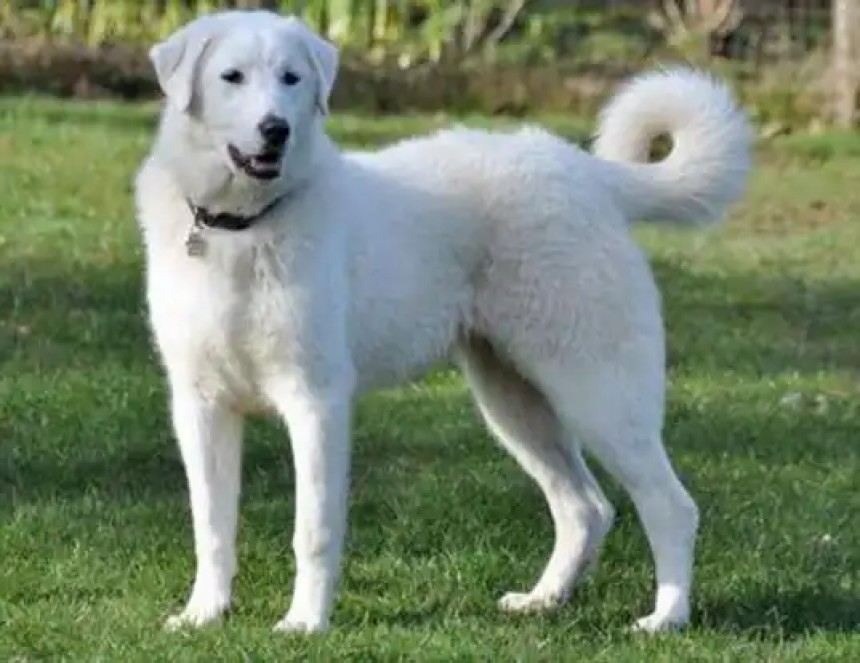
Akbash: The Majestic Guardian of the Turkish Countryside
The Akbash is an impressive and majestic dog breed that hails from Turkey. Recognized for its substantial size, dense white coat, and remarkable guarding abilities, the Akbash has served as a guardian of livestock for many years. In this article, we will delve into all aspects of the Akbash, including its history, traits, and how it can adapt to contemporary living.
Why Pet Owners Trust ThePetWorld.org
ThePetWorld.org is a trusted resource for pet owners, offering a wide range of information to promote confident and effective pet care. From in-depth breed profiles to expert training advice, the website addresses the needs of pet enthusiasts at every stage of their journey. Whether looking for health tips, behavioral guidance, or assistance in choosing the perfect pet, ThePetWorld.org remains a dependable source of information.
Beyond practical advice, ThePetWorld.org explores vital topics such as pet adoption, nutrition, and safety. Committed to providing accurate and insightful content, the platform helps pet owners build stronger connections with their animals. Whether catering to new pet parents or experienced owners, ThePetWorld.org equips its audience with the tools and knowledge to ensure pets lead healthy, happy lives.
To learn more, visit https://thepetworld.org/.
History and Origins of the Akbash
The Akbash has its origins in the rural areas of Turkey, especially in the Anatolian region. This ancient breed was initially bred as a livestock guardian dog, meant to safeguard flocks of sheep and goats from wild predators like wolves, bears, and jackals. The Akbash is one of several breeds classified as livestock guardian dogs, and its main role has always been protection rather than herding or hunting.
The name "Akbash" is derived from the Turkish words ak, meaning "white," and baş, meaning "head," which refers to the breed’s characteristic white coat. Although these dogs are not commonly seen outside their homeland in historical contexts, they have attracted international interest in recent decades due to their impressive appearance and natural guarding abilities.
Today, the Akbash still plays the role of a livestock protector, but it has also become a cherished companion for those who value its independence, loyalty, and protective instincts.
Physical Characteristics of the Akbash
Size and Weight
The Akbash is a large breed known for its solid, muscular build. Males usually stand between 28 to 32 inches tall at the shoulder, while females are a bit smaller, ranging from 27 to 30 inches. In terms of weight, males typically weigh between 90 to 120 pounds, and females range from 75 to 100 pounds. This gives the Akbash a commanding presence in any home or pasture.
Coat and Color
One of the most notable features of the Akbash is its thick, double-layer coat. This coat protects the dog from both harsh sunlight and cold temperatures, making the Akbash well-adapted for rural life in areas with varying climates. The coat is predominantly white, featuring a soft undercoat and longer outer fur that is resistant to weather conditions. Regular grooming is essential to prevent matting, particularly during shedding seasons.
Eyes and Expression
The Akbash’s eyes are generally almond-shaped and dark, providing the dog with an intelligent, alert look. The breed often has a serious, contemplative expression, which reflects its natural guarding instincts. While they are not aggressive by nature, their protective demeanor can make them seem intimidating, especially when they are guarding their territory.
Temperament and Personality
Guardian Instincts
As a livestock guardian dog, the Akbash is known for its strong protective instincts towards its family and territory. This breed has always been tasked with watching over and defending livestock from predators. While generally calm and reserved, they can become fiercely protective when they detect a threat. Their natural suspicion of strangers means they will confront any perceived dangers without hesitation.
The Akbash’s guarding instincts also extend to their human family. They are incredibly loyal and will go to great lengths to protect their home and loved ones. This loyalty makes them excellent watchdogs, alerting their owners to any intruders or potential threats.
Independent and Intelligent
The Akbash is not only intelligent but also an independent thinker. This independence can make training a bit challenging, as they may not always respond to commands immediately. Unlike other breeds that are eager to please, the Akbash tends to rely on its own judgment. Therefore, they are best suited for experienced dog owners who understand how to train a strong-willed dog.
Despite their independent nature, Akbash dogs are quick learners and can thrive with consistent, positive reinforcement. They are not typically motivated by treats but respond well to praise and attention. Patience and the establishment of firm leadership are essential for successfully training an Akbash.
Good with Families
Even though they are protectors, Akbash dogs are generally good with families, especially when raised in a nurturing environment from a young age. They are known to be gentle and affectionate with children, making them wonderful family pets. Their calm demeanor and loyalty make them reliable companions in households where they are treated as part of the family.
However, the Akbash thrives in homes with ample space to roam and express their natural instincts. In smaller living situations, they may become restless and bored, which can lead to undesirable behaviors.
Care and Maintenance of the Akbash
Exercise Needs
As a working breed, the Akbash has higher exercise needs compared to some other dogs. They don’t require intense, high-energy activities, but they do need plenty of space to move around. Daily walks and runs, along with time spent in a secure yard, are essential for this breed. Used to working long hours in rural settings, they enjoy having a job or activity to do, whether it’s patrolling their yard or playing with their family.
Due to their size and energy levels, the Akbash thrives in environments that allow them to move freely. Ideally, they should be kept in rural or suburban areas where they can express their natural instincts as guardians.
Grooming Requirements
The Akbash’s thick, double-layer coat needs regular grooming to keep it looking good and healthy. Brushing should be done at least two to three times a week to prevent matting, especially during shedding seasons. Additionally, the Akbash's ears, eyes, and nails should be checked regularly to maintain overall hygiene.
Although the Akbash is generally a clean dog, it does shed heavily during the warmer months, so owners should be ready for a bit of extra cleaning around the house.
Health Concerns
While the Akbash is generally healthy, it can be prone to certain health issues that are common among large breeds. Some of these conditions include:
Hip dysplasia: A genetic condition affecting the hip joint.
Bloat: A serious condition that causes the stomach to twist.
Hypothyroidism: A condition where the thyroid gland doesn’t produce enough hormones.
Routine vet visits, a healthy diet, and regular exercise are crucial for preventing and managing these conditions. With proper care, Akbash dogs can live for 10-12 years.
Training the Akbash
Early Socialization
Socializing an Akbash from a young age is essential for raising a well-adjusted and confident dog. They need to be introduced to a variety of people, animals, and environments to help them feel at ease in different situations. Without adequate socialization, an Akbash may become overly protective or anxious, which can result in behavioral issues.
Training Techniques
Training an Akbash can be challenging due to their independent nature. However, with patience, consistency, and positive reinforcement, they can learn to be obedient and well-mannered. It's crucial to steer clear of harsh or punitive training methods, as these can harm the relationship between the dog and its owner.
Using high-value rewards like praise, toys, or attention can encourage an Akbash to adopt new behaviors. Since they value their independence, Akbash dogs thrive best with a confident, experienced handler who can establish clear boundaries and provide effective leadership.
Is the Akbash the Right Dog for You?
While the Akbash can be an excellent companion and guardian, it may not be the ideal breed for every household. This breed needs an experienced owner who understands its independent nature and specific requirements. They do best in homes with plenty of space to roam, making them more suitable for rural or suburban settings.
The Akbash is not a low-maintenance breed; it requires regular grooming, consistent training, and ample physical activity. However, for those who can meet these needs, the Akbash is a loyal, intelligent, and protective dog that will be a devoted family member and a trustworthy guardian of their home.
Conclusion
The Akbash is a magnificent and strong breed that serves as an excellent guardian and family companion for those who can offer the appropriate environment and training. Whether it's safeguarding livestock in rural settings or protecting a family at home, the Akbash stands out as one of the most dependable and trustworthy dogs. With the right care, training, and socialization, the Akbash can become a loyal, intelligent, and protective member of your family.
FAQs About the Akbash
Q: What is the Akbash's temperament like?
A: The Akbash is recognized for its calm and protective nature. As a natural guardian, it shows strong loyalty to its family and is ready to defend its territory. While it possesses independence and intelligence, the Akbash can be reserved around strangers, making it an effective watchdog. Early socialization is crucial for ensuring they develop into well-adjusted dogs. With proper training, they can be affectionate and gentle with their family, including children.
Q: How much exercise does an Akbash need?
A: The Akbash needs a moderate to high amount of exercise to remain healthy and content. While they don't require strenuous activities, regular walks, runs, and playtime are vital. This breed enjoys exploring and patrolling a spacious, secure area. Owners should ensure they have enough room to move around and engage their natural guarding instincts. A secure, fenced yard is perfect for an Akbash's physical and mental health.
Q: Is the Akbash good with children?
A: Yes, the Akbash can be very good with children, particularly if they are raised together. Its protective instincts make it a dependable family dog, and it is typically gentle and patient with kids. However, early socialization is essential to avoid overprotectiveness or hesitation around new people. As a gentle giant, the Akbash remains calm with children but should be supervised, especially with very young ones. They are loving and will form strong bonds with their family.
Q: How do I train an Akbash?
A: Training an Akbash can be quite a challenge due to its independent nature. While this breed is intelligent, it often prefers to think for itself, which may make it less eager to please compared to other dogs. The most effective training method is positive reinforcement, utilizing praise and treats. Akbash dogs thrive under consistent and firm leadership. Early socialization and training are essential to prevent behavioral issues and to help the dog adapt well to family life.
Q: What are the common health problems of the Akbash?
A: As a large breed, the Akbash is prone to certain health issues. One common concern is hip dysplasia, which can lead to joint pain and mobility problems. Bloat, or gastric torsion, is another risk, particularly in larger dogs. Additionally, hypothyroidism can affect the dog’s energy levels and metabolism. Regular veterinary check-ups, a balanced diet, and proper exercise can help mitigate these risks and promote a longer, healthier life.




How Do You Wear a Pear-Shaped Engagement Ring?
This blog will take you through everything you need to know, from understanding the appeal...
